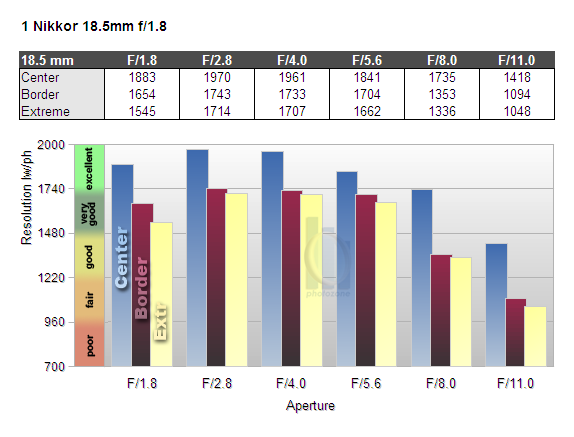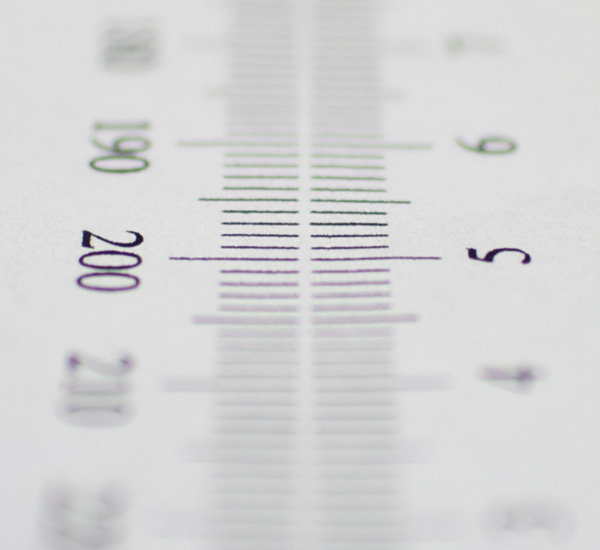|
Page 2 of 3

Distortion
Normal primes often show some barrel distortion, and the Nikkor is no exception in this regard. However, with an amount of 1.9%, the lens delivers a lot more distortion than one would expect. This can be visible and disturbing for subjects with straight lines near the image border. However, the distortion is uniform and thus easy to remove in post processing.

The chart above has a real-world size of about 120x80cm.
Vignetting
The lens shows very pronounced vignetting at the largest aperture setting. As usual, stopping down reduces the amount considerably and from f/4 on, light fall-off should no longer be an issue with most subjects.
The chart below shows the vignetting characteristic based on NEFs converted by RAW Developer, which does not apply any correction.

Unlike distortion, Nikon chose to have vignetting corrected in the camera when shooting JPG (or using Nikon's View NX or Capture NX software to convert NEFs). The chart below shows the vignetting based on the same images as the previous chart, but automatically corrected by the camera firmware.

MTF (resolution)
The lens delivers excellent resolution in the image center straight from the maximum aperture. Stopping down to small apertures reduces sharpness considerably due to diffraction effects.
The borders and corners show very good resolution from the maximum aperture down to f/5.6. Again, stopping down further reduces sharpness because of diffraction.
The global peak performance is reached at f/2.8, however the lens performs on a very high level across the whole CX frame from f/1.8 down to f/5.6
Please note that the MTF results are not directly comparable across the different systems!
Below is a simplified summary of the formal findings. The chart shows line widths
per picture height (LW/PH) which can be taken as a measure for sharpness.
If you want to know more about the MTF50 figures you may check out the corresponding
Imatest Explanations

Chromatic Aberrations (CAs)
The level of lateral CAs (color shadows at harsh contrast transitions) is in the range of around 1 up to just above 1.4 pixels in the tested aperture range. However, CAs can easily be corrected in software, in fact the Nikon 1 cameras automatically do so if you shoot JPGs.

Bokeh
One of the primary usage scenarios for a large aperture lens is to separate the main subject from the background. In such an image the quality of the bokeh (out-of-focus blur) is of major significance.
The lens delivers somewhat nervous bokeh, especially at the largest aperture setting. Stopping down to f/2.8 (if the subject allows) delivers a little better blur quality, but it's still far from being outstanding. The impression of nervousness is emphasized by background highlights, which show some outlining, especially at f/1.8.

Bokeh Fringing
Bokeh fringing (non-coinciding focal planes of the various colors) is a common issue with relatively fast glass. As you can notice below, the halos have different colors - magenta (red + blue) in front the focus point and green beyond. Truly "apochromatic" lenses don't show this kind of fringing but these lenses are very rare especially below 100mm. Unlike lateral lateral CAs, bokeh fringing cannot easily be fixed in post processing.
Typical for most fast primes, the Nikkor shows some amount of fringing at large aperture settings, which can of course be reduced by stopping down.
|
Move the mouse cursor over the f-stop marks below to observe the respective bokeh fringing
|
| f/1.8 |
f/2.8 |
f/4.0 |
f/5.6 |
|

|
|